14 Most Influential Style Figures in History

Throughout history, certain individuals have transformed how we dress and express ourselves through clothing. These fashion pioneers broke boundaries, challenged norms, and created enduring styles that continue to inspire designers and everyday people alike. From creating revolutionary garments to embodying cultural shifts, these fourteen style figures changed fashion forever.
1. Coco Chanel (1883–1971)
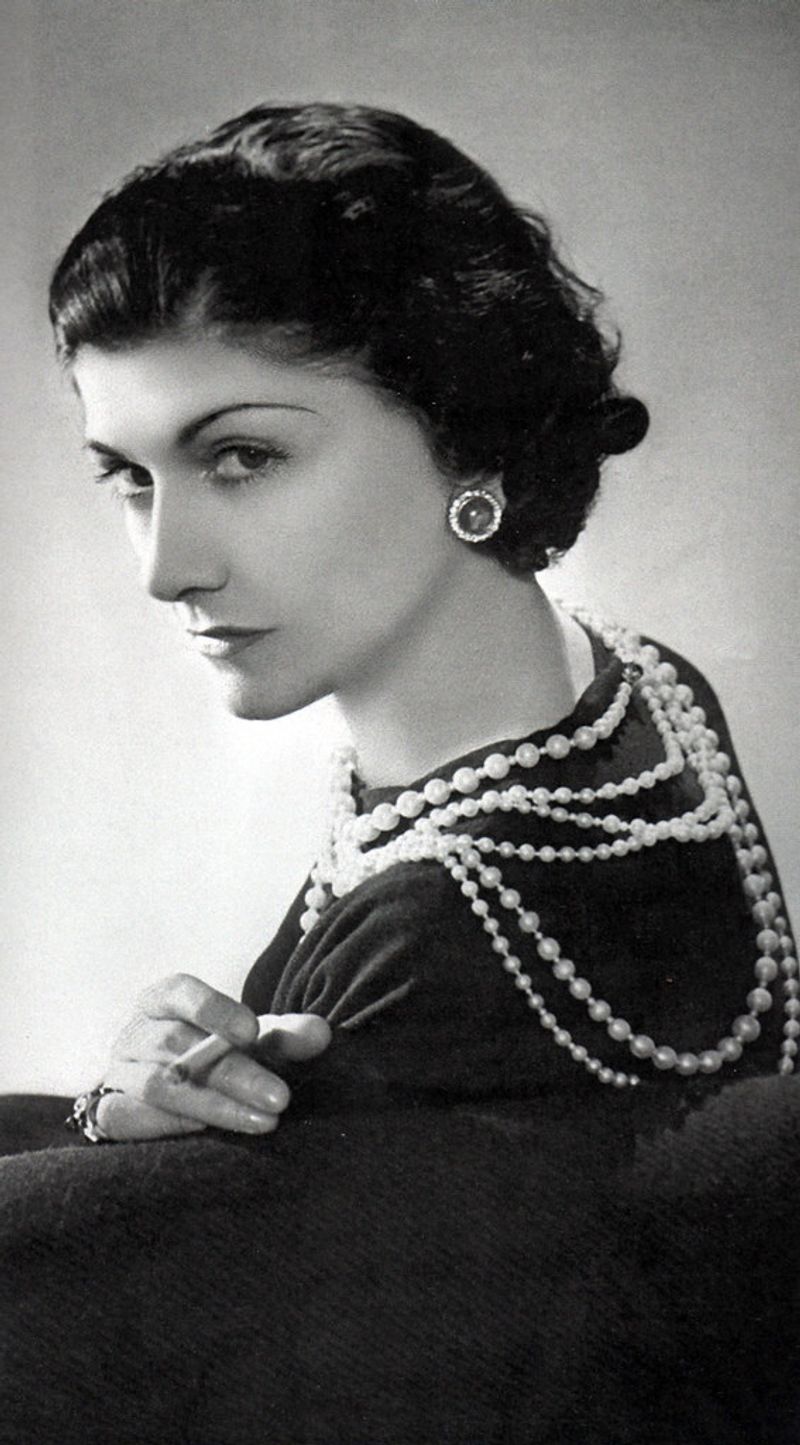
Before Chanel, women were trapped in corsets and elaborate outfits. This revolutionary designer freed the female form with comfortable jersey fabrics and practical designs that women actually wanted to wear. Her introduction of the little black dress in 1926 democratized elegance for all social classes. Chanel’s philosophy of luxurious simplicity extended beyond clothing to perfume, jewelry, and an entire lifestyle aesthetic. Her trademark suits with braided trim and interlocking CC logo remain instantly recognizable worldwide. Perhaps most importantly, she pioneered the concept of modern feminine style – one where comfort didn’t sacrifice sophistication. Her innovations like costume jewelry, quilted handbags, and slingback shoes continue to influence fashion houses nearly a century later.
2. Josephine Baker (1906–1975)
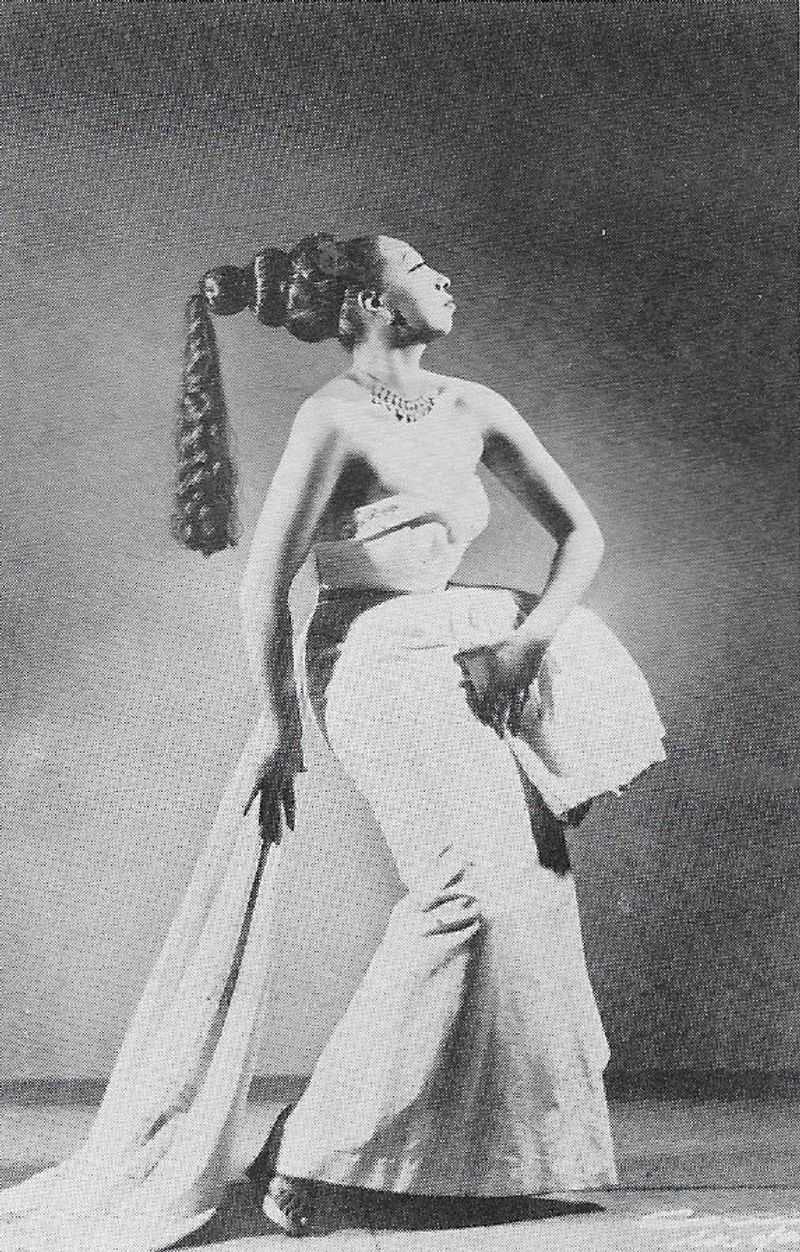
Shattering racial barriers with sequins and feathers, Josephine Baker transformed from Missouri-born dancer to international sensation in 1920s Paris. Her exotic performances featuring her famous banana skirt created a sensation that captivated European audiences and established her as fashion’s first Black icon. Baker’s sleek hairstyle – plastered close to her head with intricate kiss curls – inspired women worldwide to adopt the look. Her flamboyant stage costumes contrasted with her elegant off-stage wardrobe of Parisian couture. Beyond entertainment, this style pioneer leveraged her fame for civil rights activism, refusing to perform for segregated audiences. Her fearless personal style – combining glamour, sensuality and cultural references – made her a trailblazer whose influence extends far beyond fashion history.
3. Audrey Hepburn (1929–1993)
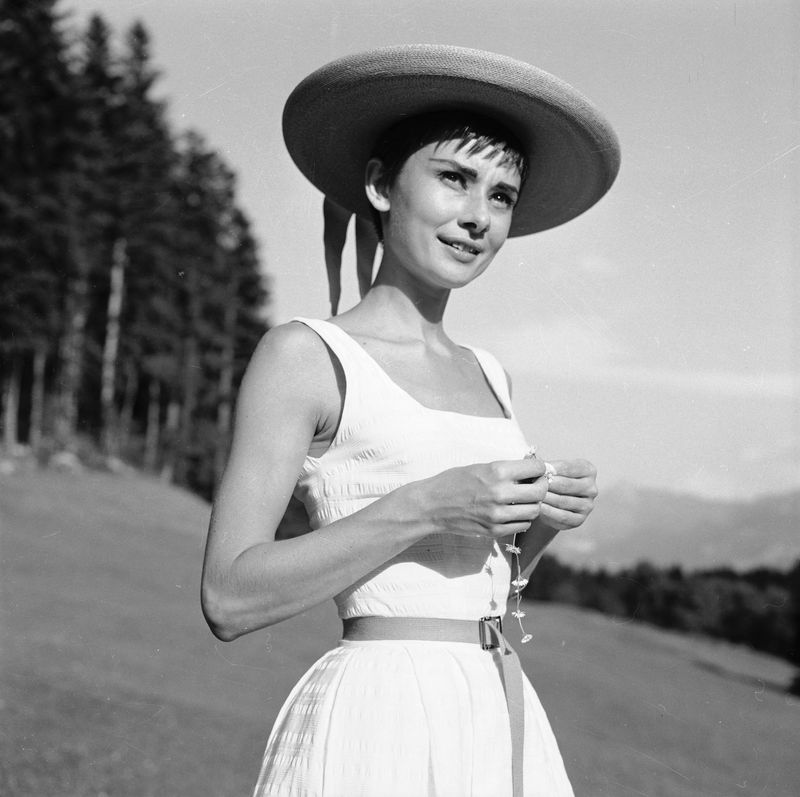
The moment Audrey stepped onto the screen in “Roman Holiday,” cinema and fashion were forever changed. Her delicate features, ballet-trained posture, and effortless elegance created an alternative to the voluptuous Hollywood standard of the 1950s. Her creative partnership with designer Hubert de Givenchy produced some of fashion’s most iconic moments – from the little black dress in “Breakfast at Tiffany’s” to the wedding gown in “Funny Face.” Women everywhere emulated her signature look: cropped pants, ballet flats, and perfectly tailored basics. What made Hepburn’s style truly influential was its accessibility and timelessness. She showed that elegance came from simplicity, proportion, and confidence rather than extravagance. Decades later, her looks remain fresh, modern, and endlessly referenced by designers worldwide.
4. Marilyn Monroe (1926–1962)

The ultimate blonde bombshell, Marilyn transformed from factory worker Norma Jeane into America’s most enduring sex symbol through carefully crafted style choices. Her hourglass silhouette – showcased in form-fitting dresses with plunging necklines – celebrated feminine curves during an era when women were expected to appear modest. Monroe worked closely with designers like William Travilla to create her most memorable looks, including the iconic white halter dress from “The Seven Year Itch.” Her signature platinum blonde hair, red lipstick, and beauty mark became instantly recognizable worldwide. Beyond the glamour, Marilyn’s style represented female empowerment through embracing sexuality on her own terms. Her influence extends beyond fashion into beauty standards, with countless celebrities and designers continuing to reference her iconic image decades after her death.
5. James Dean (1931–1955)
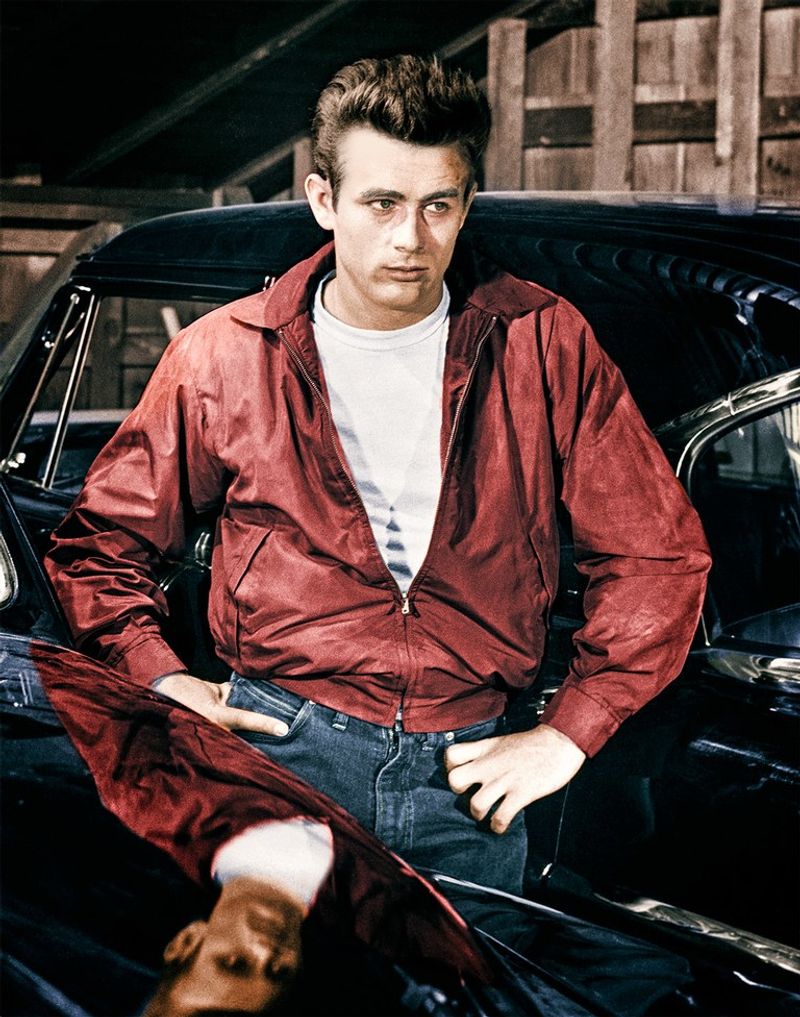
With just three films and a tragically short life, James Dean permanently altered men’s fashion through his rebellious authenticity. The image of Dean in a plain white t-shirt, jeans, and red jacket from “Rebel Without a Cause” created the blueprint for casual American menswear that persists today. Unlike the polished movie stars before him, Dean embraced a disheveled, effortless approach to dressing. His wardrobe of workwear basics – leather jackets, boots, and denim – reflected the growing youth culture’s rejection of formal dress codes and stuffy conformity. What made Dean’s style revolutionary wasn’t just the clothes themselves but the attitude with which he wore them. His brooding intensity and casual confidence transformed everyday garments into powerful symbols of youthful defiance, influencing generations of men to embrace simplicity and authenticity in their personal style.
6. David Bowie (1947–2016)
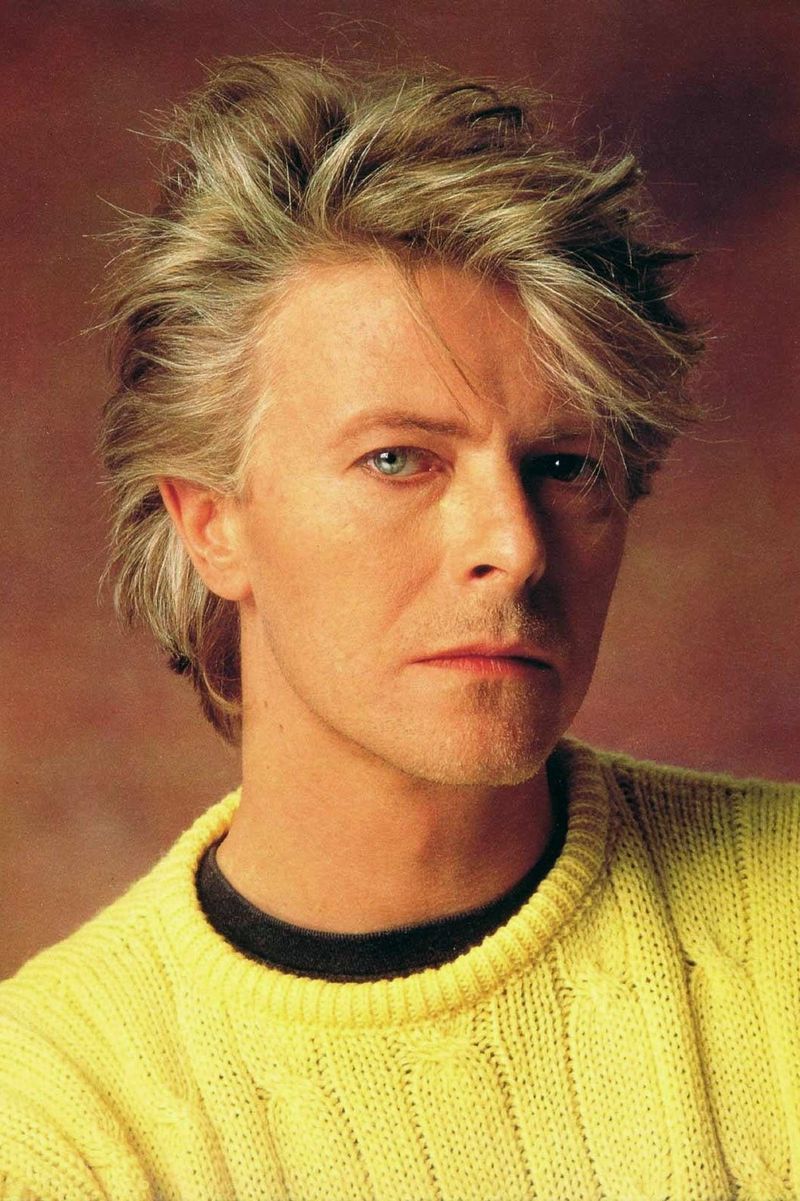
A chameleon who used fashion as artistic expression, Bowie constantly reinvented himself through groundbreaking personas like Ziggy Stardust and the Thin White Duke. His flame-orange mullet, lightning bolt face paint, and skin-tight jumpsuits challenged conventional masculinity during the conservative early 1970s. Bowie collaborated with designers like Kansai Yamamoto to create theatrical stage costumes that blended influences from kabuki theater, sci-fi, and haute couture. His androgynous appearance – slim silhouettes, platform boots, and makeup – gave permission for men and women alike to experiment with gender presentation. Even in later years, Bowie maintained his fashion forward approach, working with Alexander McQueen and Hedi Slimane. His fearless style experimentation opened doors for countless artists to use clothing as performance art and self-expression, making him a continued reference point for designers exploring gender fluidity.
7. Grace Jones (b. 1948)

Towering at nearly six feet tall with her geometric flat-top haircut, Grace Jones shattered conventional beauty standards through her bold androgyny. Her collaboration with artist Jean-Paul Goude created some of fashion’s most striking visual imagery – sharp-edged silhouettes that played with gender and power. Jones’ fearless style embraced architectural shapes, exaggerated shoulders, and gender-bending suits decades before such concepts entered the mainstream. As both model and performer, she inspired designers like Issey Miyake, Azzedine Alaïa, and Thierry Mugler, who created her most memorable looks. Her avant-garde approach to fashion wasn’t merely aesthetic but political – challenging Western beauty ideals and celebrating her Jamaican heritage. By refusing to conform to expectations for Black women in entertainment, Jones created space for future generations to express themselves without boundaries, influencing artists from Lady Gaga to Rihanna.
8. Twiggy (b. 1949)
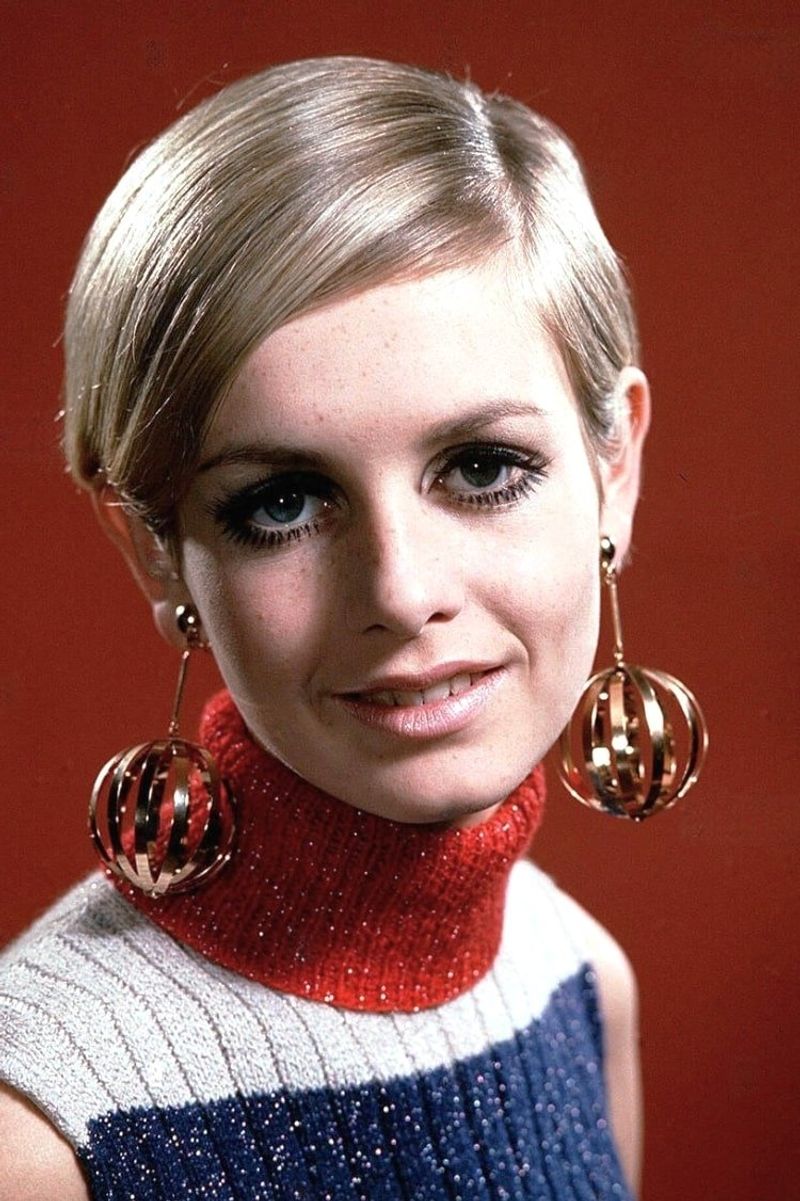
When teenager Lesley Hornby emerged as “Twiggy” in 1966, her rail-thin frame and wide-eyed look revolutionized beauty standards overnight. Her boyish figure, cropped haircut, and dramatic painted-on eyelashes perfectly embodied the youth-focused spirit of Swinging London. As the world’s first supermodel, Twiggy made mod fashion accessible through her own clothing line and widespread magazine coverage. Her signature look – mini dresses, Peter Pan collars, and color-blocked designs – represented a complete departure from the sophisticated styles of previous decades. More than just a pretty face, Twiggy’s impact came from representing a new kind of woman – youthful, independent, and free from traditional constraints. Her childlike androgyny challenged conventional ideas about femininity and helped usher in the more natural beauty standards of the 1970s, influencing fashion’s cyclical return to the mod aesthetic.
9. Princess Diana (1961–1997)
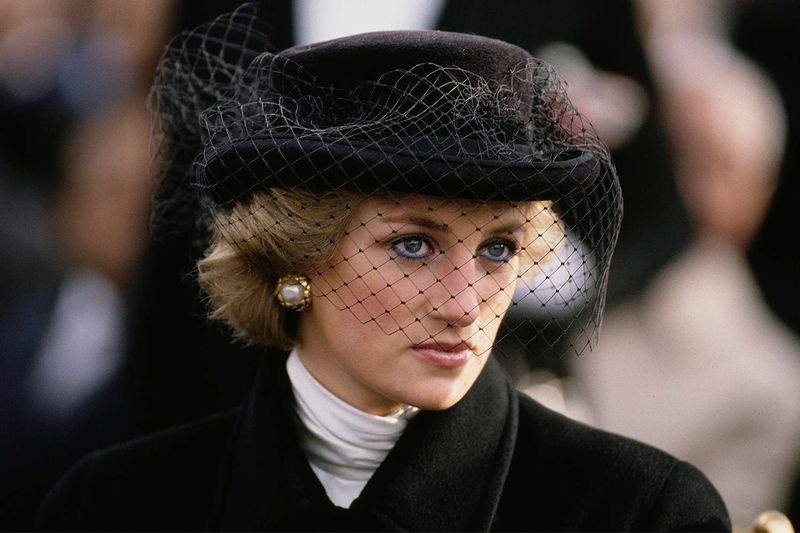
From shy kindergarten teacher to global fashion phenomenon, Diana’s style evolution captivated the world. Her wedding dress – with its 25-foot train and puffed sleeves – defined bridal fashion for a decade, while her later transformation into a confident royal broke new ground for public figures. Diana masterfully used fashion as communication, choosing bold colors and sleek silhouettes that made her approachable yet regal. Her off-duty looks – bike shorts with oversized sweatshirts, jeans with blazers – influenced everyday women as much as her glamorous evening wear. Most revolutionary was Diana’s willingness to break royal protocol through fashion choices. Whether wearing the “revenge dress” after Charles’ infidelity admission or shaking hands with AIDS patients without gloves, she used style to convey humanity and independence. Her fashion legacy lives on through both her sons’ wives and countless designers who continue to reference her iconic looks.
10. Madonna (b. 1958)
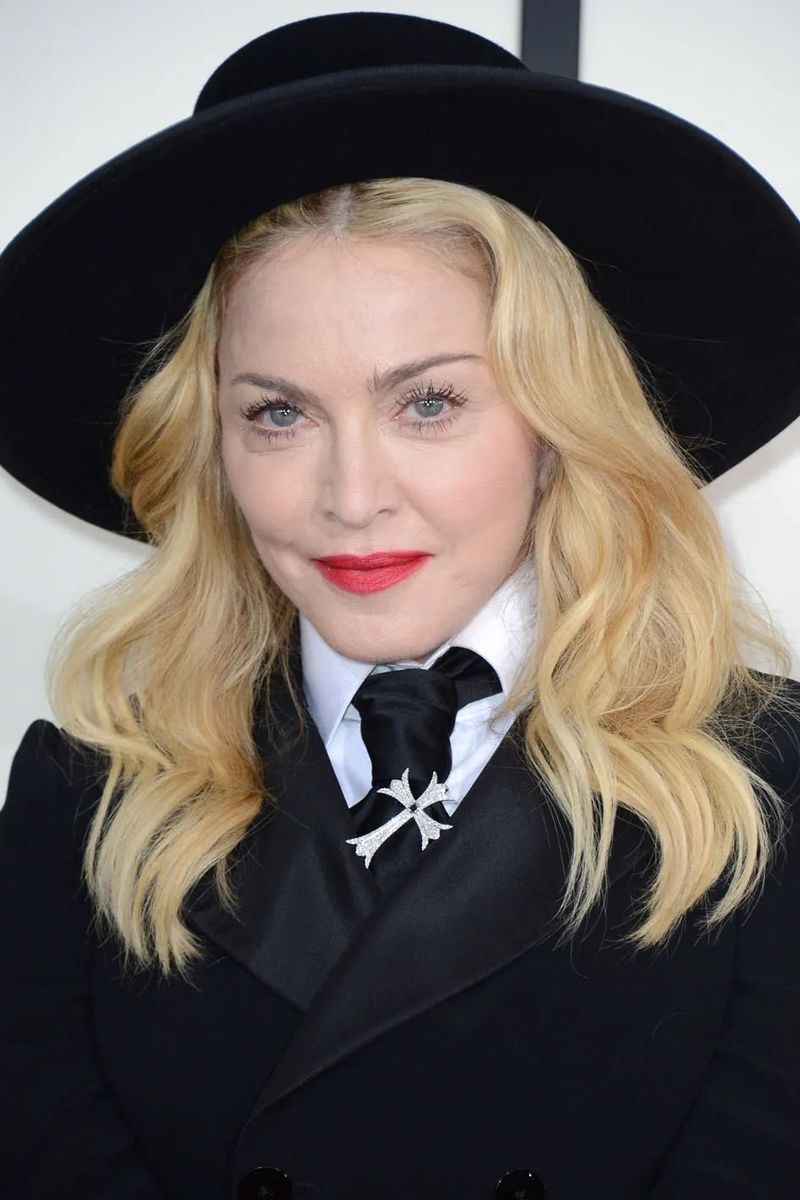
A master of reinvention, Madonna used provocative fashion to build her career and challenge social norms. Her 1980s “Like a Virgin” era – with lace gloves, crucifixes, and visible underwear – transformed lingerie into outerwear and inspired countless teenage girls to adopt her rebellious style. Throughout the decades, Madonna collaborated with fashion’s elite, from Jean Paul Gaultier’s iconic cone bra corset to Versace’s glamorous gowns. Each album brought a new aesthetic – from “Vogue’s” Old Hollywood glamour to “Ray of Light’s” spiritual bohemian look – influencing global trends with each transformation. Madonna’s greatest fashion contribution was democratizing provocative style for women. By unapologetically embracing sexuality while maintaining complete creative control, she created a template for female artists to express themselves without male approval. At over 60, she continues to challenge age-appropriate dress codes, extending her fashion influence across generations.
11. Naomi Campbell (b. 1970)
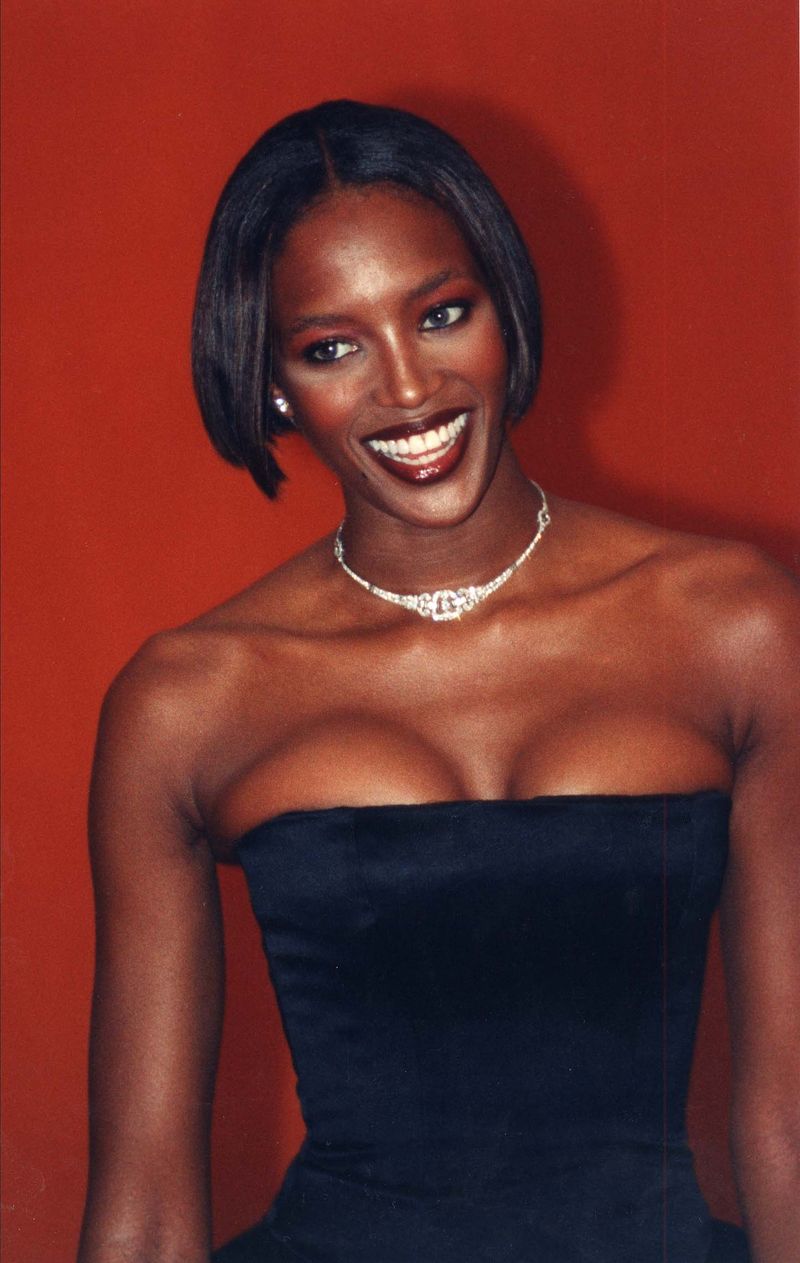
As fashion’s first Black supermodel to achieve global icon status, Naomi Campbell’s impact extends far beyond her perfect runway walk. Discovered at 15, her fierce presence and flawless features challenged the industry’s overwhelming whiteness, opening doors for models of color worldwide. Campbell’s versatility made her a favorite for designers from Alaïa to Versace, embodying everything from minimalist chic to opulent glamour. Her off-duty style – sleek silhouettes, statement sunglasses, and impeccable accessories – established the model-off-duty look that influences street style today. Beyond her beauty, Campbell’s longevity comes from her advocacy for diversity in fashion. Her willingness to speak out against racism in the industry and mentor younger models has transformed beauty standards. After four decades in fashion, she continues breaking barriers, walking runways and appearing on magazine covers well into her fifties.
12. Kate Moss (b. 1974)
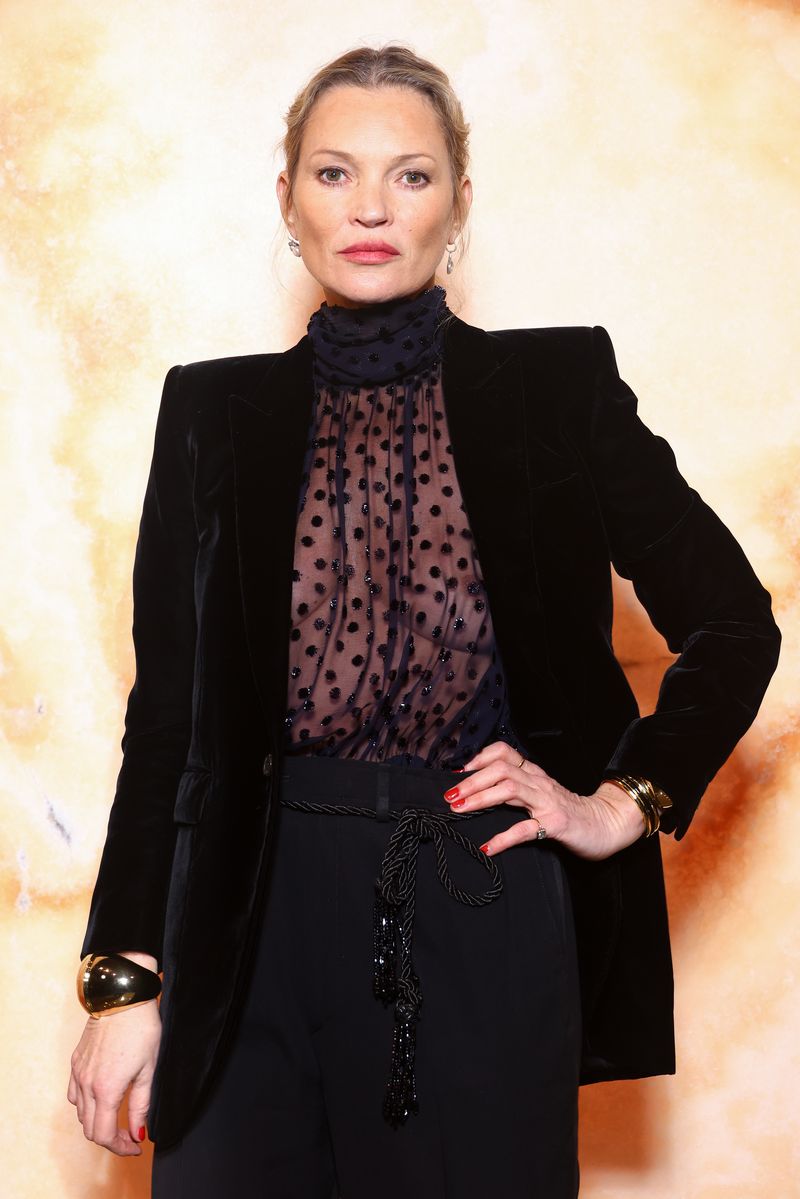
Discovered at 14 in an airport, Kate Moss’s waif-like figure sparked the controversial “heroin chic” trend that countered the amazonian supermodels of the early 1990s. Her natural, imperfect beauty and effortless style made high fashion suddenly seem accessible and cool rather than intimidating. Moss pioneered the boho-luxe aesthetic that dominated the 2000s – mixing vintage finds with designer pieces, skinny jeans with ballet flats, and festival wear with high-end accessories. Her personal style influenced designers as much as their clothes influenced her, creating a feedback loop that transformed fashion. Unlike models before her, Moss rarely spoke publicly, creating an enigmatic persona that enhanced her fashion influence. Her ability to make anything look desirable – from Wellington boots at Glastonbury to slip dresses with combat boots – gave her unparalleled commercial power, leading to countless design collaborations and cementing her status as fashion’s most enduring muse.
13. Jackie Kennedy (1929–1994)

When Jackie Kennedy became First Lady in 1961, she transformed the White House into America’s first fashion runway. Her signature pillbox hats, tailored suits, and oversized sunglasses created a sophisticated yet approachable style that women worldwide rushed to copy. Working closely with designers like Oleg Cassini, Jackie crafted a distinctly American look that projected both strength and femininity during the Cold War. Her preference for clean lines, solid colors, and architectural shapes reflected her art history background and appreciation for European craftsmanship. Jackie’s greatest fashion contribution was elevating American style on the world stage. By championing American designers while incorporating French influences, she created a uniquely cosmopolitan aesthetic that bridged old-world elegance with modern simplicity. Her fashion choices weren’t merely personal but diplomatic tools that helped shape America’s cultural identity during a pivotal historical moment.
14. Gianni Versace (1946–1997)
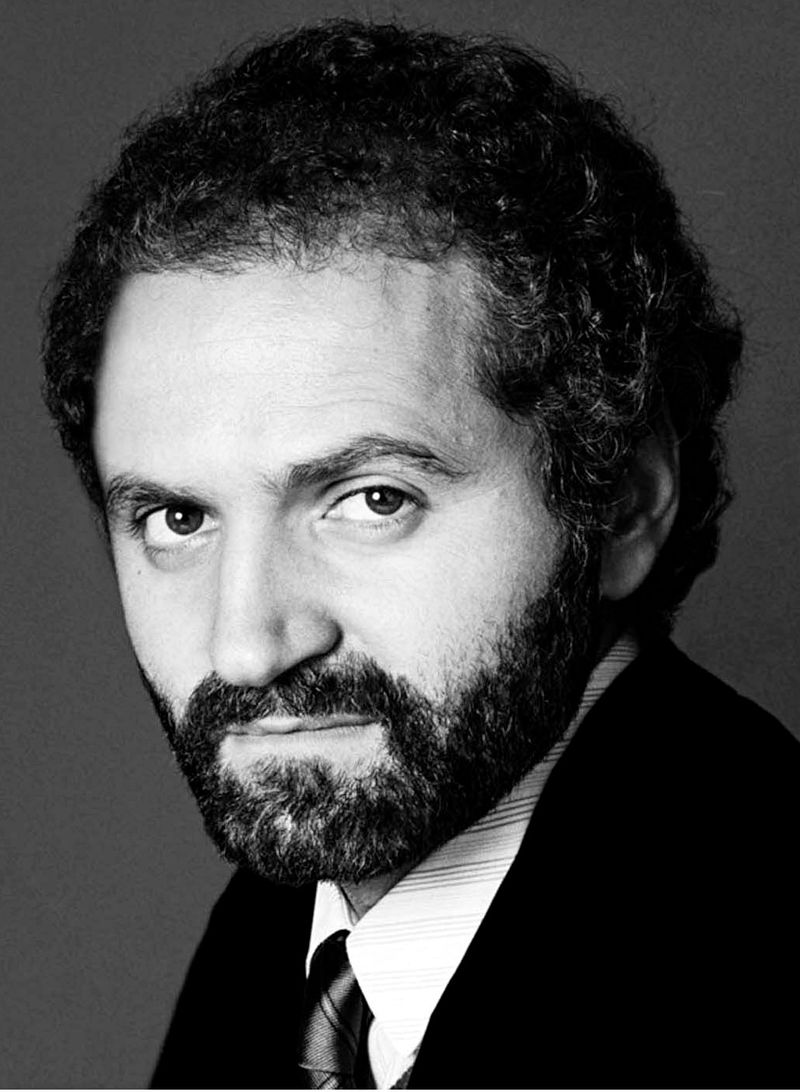
Fashion’s ultimate showman, Gianni Versace revolutionized the industry by merging high culture with celebrity, sex, and rock ‘n’ roll. His bold designs featuring baroque prints, metal mesh, and vivid colors directly challenged minimalism, creating a flamboyant aesthetic that celebrated luxury without restraint. Versace invented the supermodel phenomenon by sending famous faces down his runways and paying unprecedented fees that transformed models into celebrities. His friendships with Princess Diana, Elton John, and Madonna helped create fashion’s modern celebrity marketing playbook. Most revolutionary was Versace’s embrace of sexuality and theatricality in high fashion. His safety-pin dress worn by Elizabeth Hurley and Jennifer Lopez’s plunging green Grammy dress became cultural moments that transcended fashion. Though his life was tragically cut short, Versace’s vision of fashion as spectacular entertainment continues to influence designers seeking to create viral moments and emotional connections.

Comments
Loading…